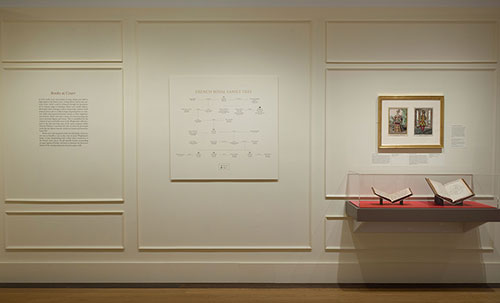Books at Court
As both works of art and symbols of status, books were held in high regard at the French court. A large library had its own cultural cachet, which could beenhanced through the decoration of its volumes’ pages or bindings. Books were mobile objects, allowing for their exchange as tokens of patronage. Authors could dedicate their work to a noble in hopes of gaining favor at court, and nobles often presented bound volumes to their supporters and retainers. Books were also a means of commemorating the court’s principal figures and events. This is exemplified by the volumes of opera and ballet scores in the Wrightsman collection, such as the sole surviving copy of the court composer André Danican Philidor’s La princesse de Crète, as well as by devotional works like the Hymne nouvelle, which was written and bound for Louis XIV.
Books were well integrated within the full display of decorative arts at Versailles—just as they were in Jayne Wrightsman’s home. In fact, bookbinding had a rather direct connection to the French court’s decor: the gilt dentelle borders surrounding an open expanse of leather mirrored in miniature the decorative frames of the wood paneling that lined the palace walls.
French Royal Family Tree
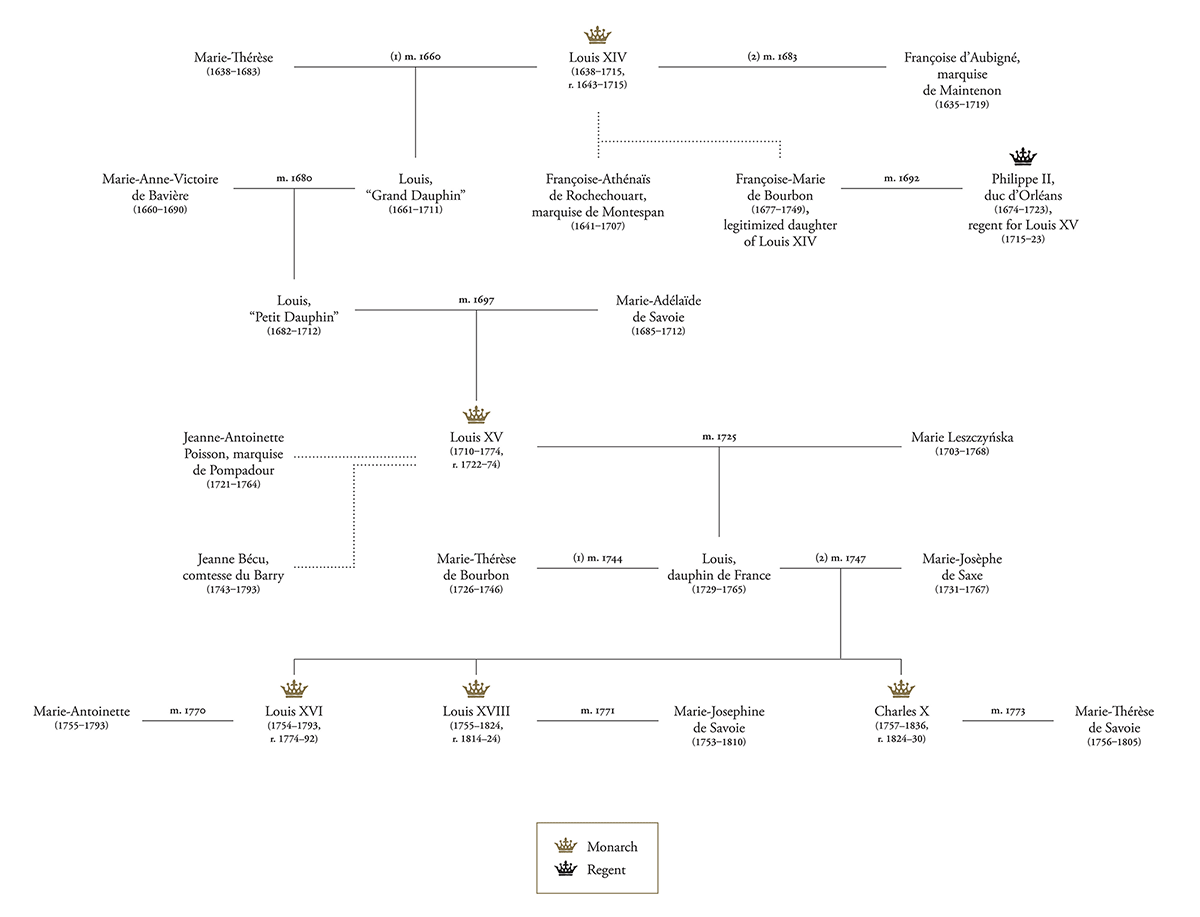
Joseph and Étienne Montgolfier
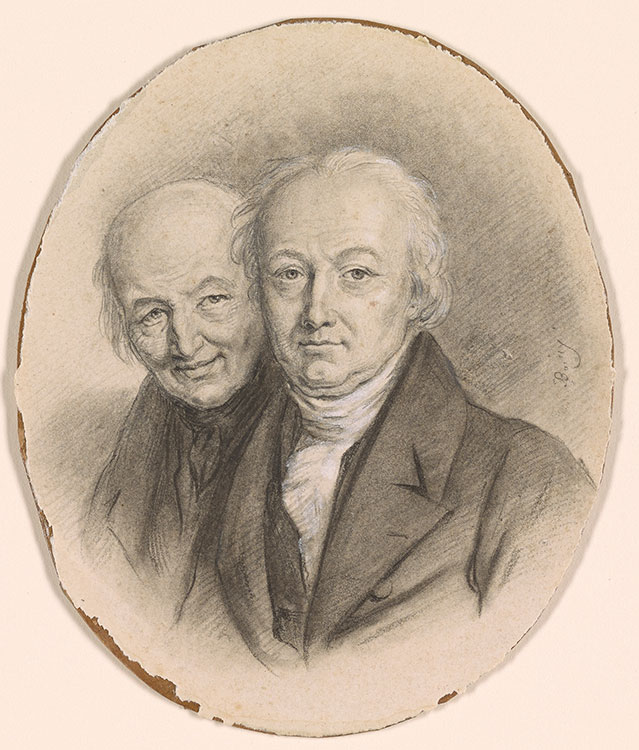
Around 1782, the Montgolfier brothers became among the first to develop the European hot-air balloon, or globe aérostatique, as they called it. As they came from a family of paper manufacturers in southern France, the brothers used materials like paper and taffeta in their early experiments to create the large pockets for hot air. This drawing by Boilly captures the expressions and personalities of the two brothers. Joseph, the elder and purportedly shier sibling, is portrayed behind the outgoing Étienne.
Louis-Léopold Boilly (1761–1845)
The Montgolfier Brothers, Joseph-Michel (1740–1810) and Jacques-Étienne (1745–1799), mid-1790s
Black chalk, heightened with white opaque watercolor
Gift of Stuart and Beverly Denenberg in honor of William M. Griswold; 2007.125
Bound For Louis Charles de la Baig, Comte de Viella (1744–1828)
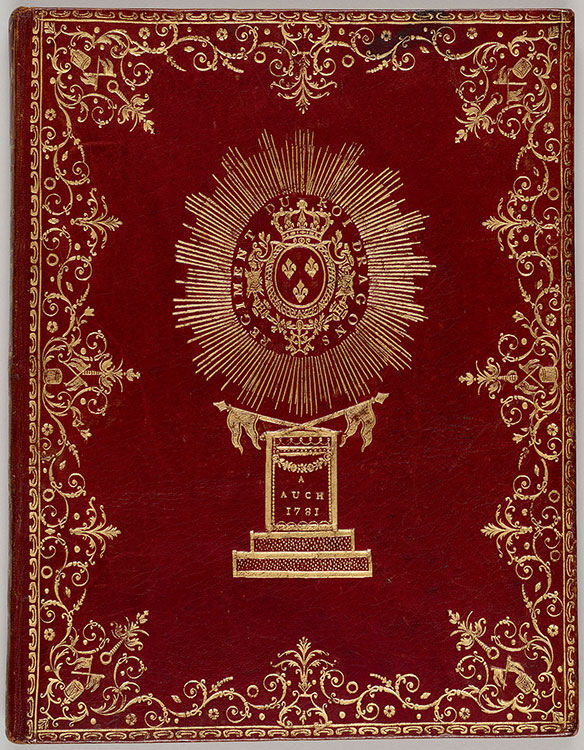
Noé, bishop of Lescar, delivered this speech to the King’s Dragoons, an elite group of Louis XVI’s troops, after they had just returned from America. In September 1781, the dragoons aided George Washington’s army at the Battle of the Chesapeake, a critical turning point in the American Revolution that sealed the British general Charles Cornwallis’s defeat at Yorktown. This copy was bound for Noé’s nephew, Louis Charles de la Baig, who was the French unit’s
second-in-command under General Lafayette. The decorative elements in the dentelle commemorate the victorious dragoons, while a glorified France is literally placed on a pedestal.
Red morocco, with gilt tooling and armorial, on: Marc-Antoine de Noé (1724–1802)
Discours prononcé dans l’église métropolitain d’Auch, 1781
PML 198393
Commemorating a Royal Spectacle
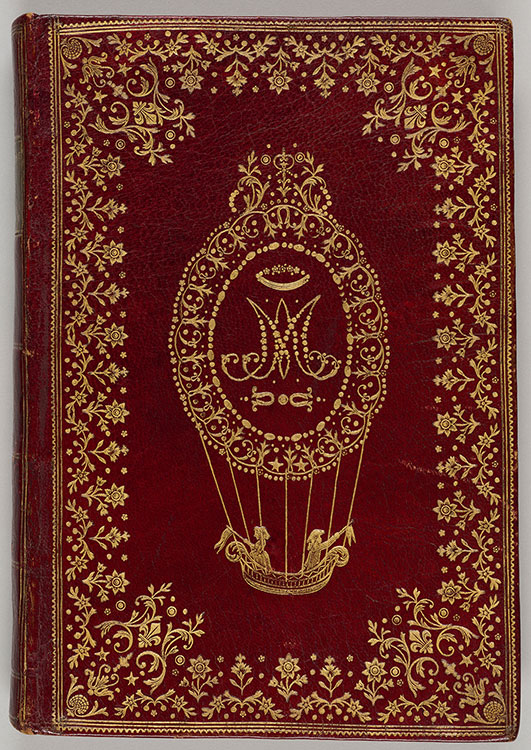
The Montgolfier brothers’ experiments with hot-air balloons quickly drew the attention of the king. On 19 September 1783, they performed the first-ever flight at Versailles, sending up several farm animals as passengers. That October, Étienne became the first human test pilot, in a balloon decorated with Louis XVI’s face and monogram (see image at right). These two bindings commemorate that ascent, replacing Louis’s initials with those of Marie-Antoinette. The Montgolfier balloon made such an impact that the balloon globe became a visual element in all types of decorative arts and home accessories.
Bound for Marie-Antoinette (1755–1793)
Red morocco, with gilt tooling “à la Montgolfière” and monogram, on: Barthélemy Imbert (1747–1790)
Lecture du matin and Lecture du soir, 1782
PML 198378–79
Bound For Jean-baptiste Colbert, Marquis De Seignelay (1651–1690)
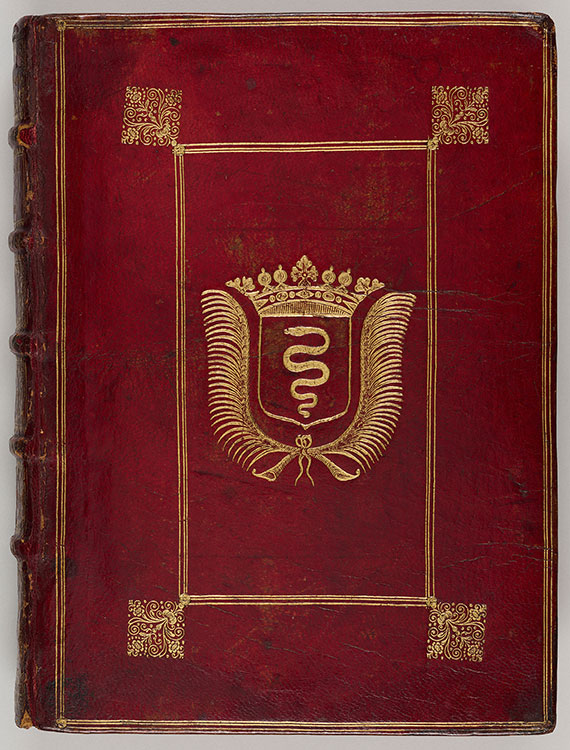
Colbert was minister of the navy under Louis XIV, a position he gained from his father, Jean-Baptiste Colbert (1619–1683), an influential secretary of state known as Le Grand Colbert. The younger Colbert inherited his father’s extensive library of over twenty thousand volumes. Although he was not too interested in expanding the collection, this volume is one of several that can be directly tied thim. Tachard, a Jesuit missionary and mathematician, wrote Voyage to Siam after several trips to the region (modern-day Thailand) as a French envoy; of interest to Colbert may have been the account’s firsthand insight into a place where France had imperialist aims.
Eloi Levasseur (act. 1636–1700), binder
Red morocco, with gilt armorial, on: Guy Tachard (1651–1712) Voyage de Siam, 1686
PML 198286
Royal Religion
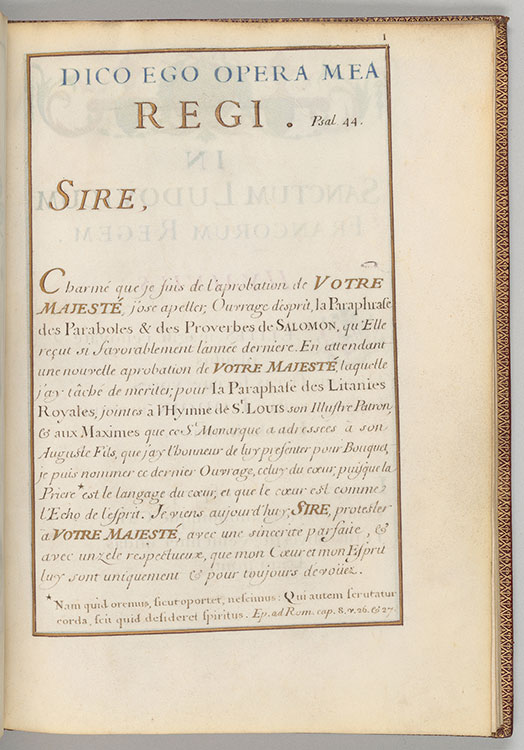
The Bourbon line of the French monarchy began with Henri IV, Louis XIV’s grandfather, who was descended from the youngest son of Louis IX (St. Louis). The elaborate manuscript hymn honoring St. Louis at left—a presentation copy for Louis XIV—traces the familial connection to the saint and thereby underscores the Bourbons’ divine authority to rule.
At right is a volume of religious texts reissued annually for Holy Week (semaine sainte), the week before Easter. The engraved frontispiece
depicts Louis XV and Marie Leszczyńska in prayer before a vision of the Christian Trinity. Such illustrations helped printers to market their yearly editions in a competitive market.
Written for Louis XIV (1638–1715)
Claude Charles Guyonnet, sieur de Vertron (1645–1715)
Hymne nouvelle a l’honneur de Saint Louis, ca. 1680
Manuscript on vellum
MA 23389
